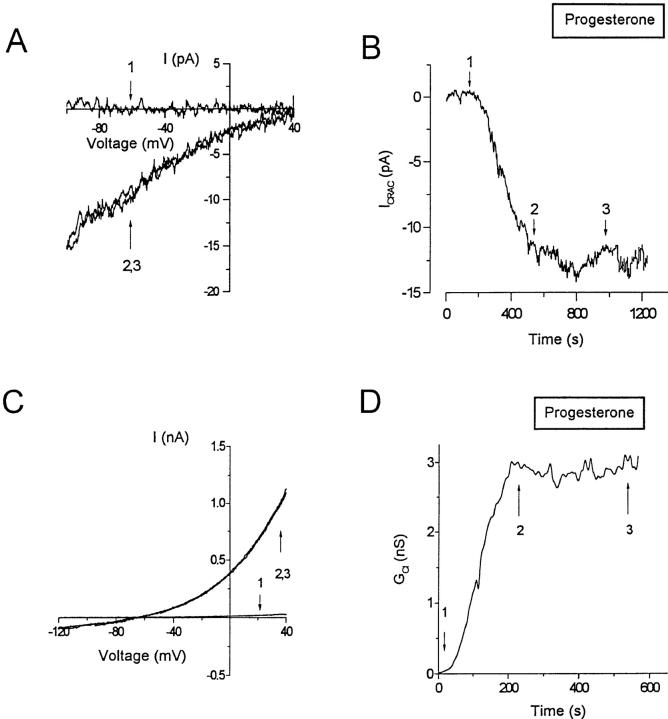Figure 9.
Progesterone does not affect CRAC or Cl− channels. (A) Whole-cell recordings of Ca2+ current through CRAC channels measured during voltage ramps from −100 to +40 mV for a duration of 200 ms. The pipette solution contained (in mM) 128 Cs+ aspartate, 12 BAPTA, 0.9 CaCl2, 3.16 MgCl2, Hepes (pH 7.2). The external solution had the following composition (in mM): 150 NaMeSO3, 20 CaCl2, 10 glucose, 10 Hepes (pH 7.4). (B) Time-dependent changes in the amplitude of the current measured at −80 mV. Arrows, Representative currents recorded before store depletion (1), and after maximal induction activation of CRAC channels, while superfusing cells with control solution (2) or with an external solution containing 30 μM progesterone (3). (C) Whole-cell recordings of swelling-activated Cl− current (ICl) measured during voltage ramps from −120 to +40 mV for a duration of 200 ms. The pipette solution contained (in mM) 140 Cs+ aspartate, 2 MgCl2, 4 MgATP, 1 CaCl2, 10 EGTA, 10 Hepes (pH 7.2). For the induction of ICl, the pipette solution was made hypertonic (390–400 mosmol) by the addition of 100 mM glucose. Currents are shown before the onset of cell swelling (1), and after maximal induction of ICl, while superfusing cells with control solution (2) or with an external solution containing 50 μM progesterone (3). (D) Time-dependent changes in the slope conductance measured at the reversal potential for Cl−.

